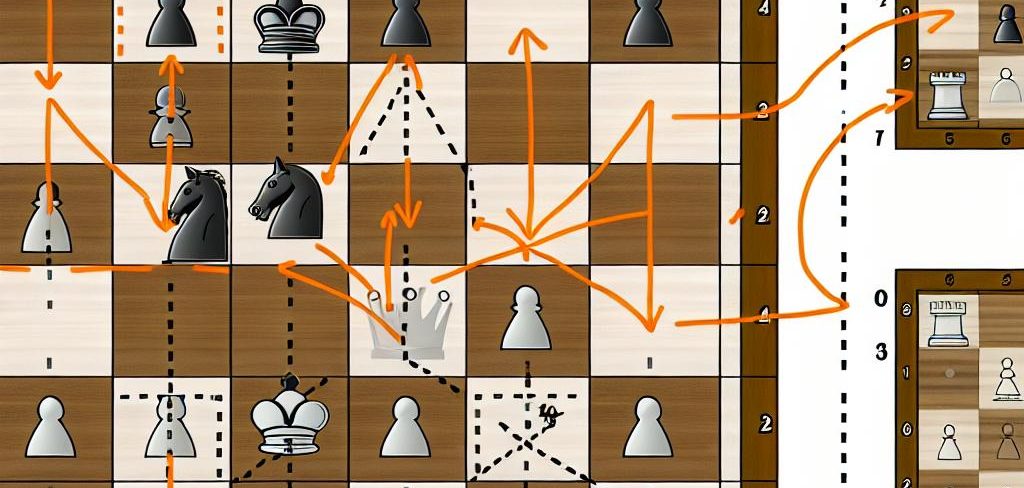Understanding Castling in Chess
The maneuver known as castling is one of the most crucial, unique, and strategic moves in the game of chess. It allows a player to both improve the safety of their king and advance their rook simultaneously. As an integral part of many chess strategies, castling can have a significant impact on the dynamics and the outcome of a game. Understanding both the rules that govern this move and its strategic advantages is essential for executing it effectively.
Rules of Castling
The castling maneuver involves two pieces: the king and one of the rooks. When a player castles, they move their king two squares towards a rook, and then the rook jumps over the king to land directly beside it. To perform castling, certain conditions must be fulfilled:
- The king and the chosen rook must not have moved. Throughout the game, neither the king nor the rooks involved in the castling move should have been moved from their original positions. This restriction preserves the integrity and rationale behind the maneuver.
- No pieces between the king and rook. The pathway between the involved king and rook must be clear of any pieces. This unencumbered pathway is necessary for the seamless execution of the castling move.
- The king cannot be in check. Castling cannot occur if the king is currently in a state of check. This rule ensures that the move is not used as an escape from an immediate threat.
- The king must not pass through or land on a square that is attacked. This rule further ensures that the king is not placed in a position of vulnerability during the castling move, maintaining the safety that the maneuver is intended to provide.
Types of Castling
Castling can be performed in one of two ways: kingside castling or queenside castling. Each offers distinct strategic implications and should be chosen based on the current board position and strategy.
Kingside castling involves the rook located on the side of the king. As the most common form of castling, this move brings the king closer to a corner, often providing a solid defensive arrangement. With this move, the rook makes a two-square horizontal leap.
Queenside castling, in contrast, involves the rook on the initial side of the queen. Here, the king again moves two squares toward the rook, which then lands immediately beside the king. Queenside castling often provides control over more central squares compared to kingside castling, granting the player different tactical opportunities.
Strategic Benefits of Castling
Recognizing the right moments to castle can afford substantial advantages in gameplay. The strategic benefits conferred by castling include:
- King’s Safety: The primary function of castling is to transfer the king away from immediate threats and into a safer position, typically a corner of the board, where it is less susceptible to attacks.
- Rook Activation: By executing the castling move, a player can not only secure the king but also activate the rook, making it a potent piece in controlling open files and applying pressure on the opponent’s layout.
- Development: Castling assists in the efficient development of one’s position, often signaling the end of the opening phase. It allows for the connection of rooks and sets up a better coordinated middle-game strategy.
Castling Considerations
Despite being a powerful strategic tool, it is important to weigh the circumstances and timing of the castling move thoroughly:
Evaluate Opponent’s Threats: Before proceeding with castling, it is vital to analyze the position for any potential threats from the opponent’s pieces. An ill-considered castling move can expose vulnerabilities that may be swiftly exploited by an experienced adversary.
Choose the Right Side: Players must assess whether to castle on the kingside or queenside based on the board configuration. Queenside castling, often regarded as a more aggressive choice, might enable the player to initiate quicker pawn advances on the opposite flank, posing difficulties for the opponent.
Timing: Timing in castling is crucial. Premature castling might offer the opponent chances to open lines towards the king, while delayed castling could see the king trapped in the center without sufficient pawn cover.
For more comprehensive insights into the strategy and implementations of castling in chess, additional resources and chess guides can be explored from various chess education platforms. A thorough understanding of the nuances involved in when and how to castle can significantly enrich your capability in chess, helping you build a robust defense for your king while ensuring better coordination for your offensive maneuvers.



